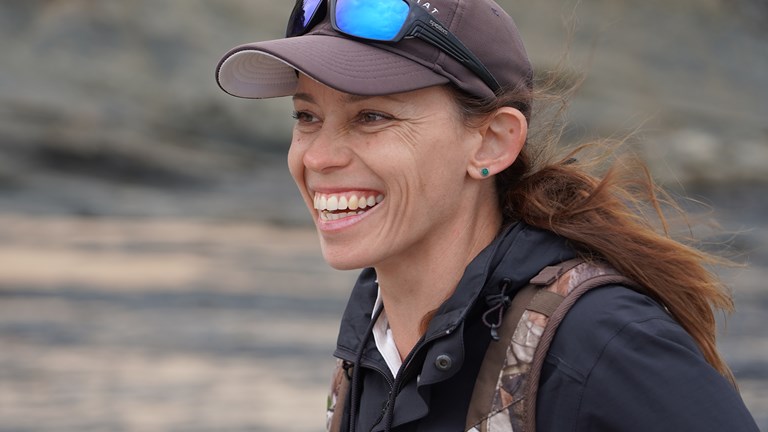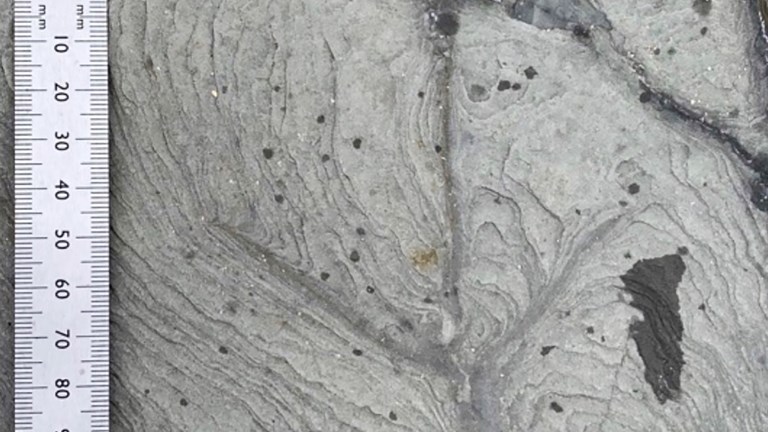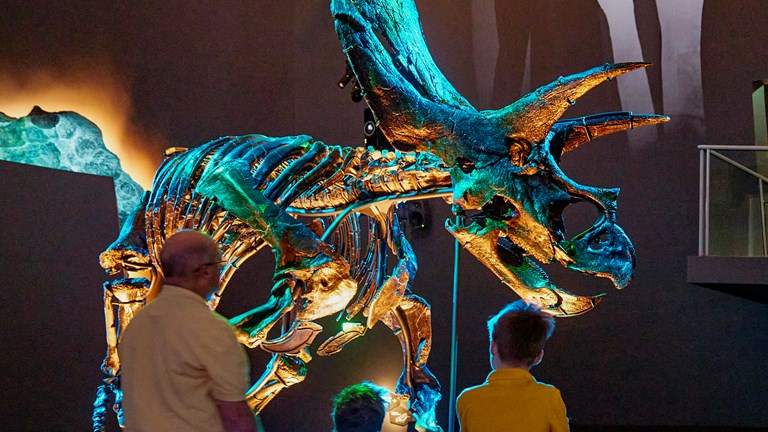New dinosaur footprints belong to the largest carnivores of Early Cretaceous southern Australia
24 new dinosaur tracks have been discovered on Boonwurrung Country, near Inverloch, on Victoria’s Bass Coast.
This exciting find includes 18 tracks, that are at least 120 million years old, made by theropods—a group of two legged carnivorous dinosaurs.
‘The discovery of numerous theropod tracks in the Cretaceous rocks of Victoria is the best evidence to date that these former polar environments supported a variety of dinosaurs, including large carnivores,’ says Dr Tom Rich, senior curator of vertebrate palaeontology at Museums Victoria Research Institute.
He is a co-author on the new research, now published in Alcheringa: An Australasian Journal of Palaeontology.
‘These animals were living inside the Antarctic circle because at the time Australia was a lot further south than it is now,’ says Tom.
And while previous fossil evidence has pointed to this colder environment supporting smaller dinosaurs, these footprints help to tell a different story—the largest measures 47 centimetres from heel to toe claw.
‘The hip height of that theropod would have been about the same as the full height of a tall, modern-day human—or a bit more than six feet tall,’ says the study’s lead author, Dr Anthony Martin, a palaeontologist from Emory University in Atlanta, Georgia.
This, and another 44 centimetre long footprint, are the largest known Early Cretaceous theropod footprints in southern Australia, comparable in size to the megaraptoran Australovenator.
‘The large theropods would likely have fed on prey such as smaller dinosaurs, fish and turtles,’ says Anthony.
The newly-discovered tracks also include four footprints made by smaller herbivorous dinosaurs, known as ornithopods, and two of unknown origin.
These 3D scans allow scientists to accurately study the footprints, away from the confines of the tidal shoreline. We make them available to the public, so you can get a closer look too. Creator: John Broomfield/Museums Victoria
Stepping back to the time of the dinosaurs
These footprints are located in the Wonthaggi Formation—a stretch of rocky layers that date back to the Cretaceous, when Australia was still attached to the supercontinent Gondwana.
It is an area with a rich history of revealing fossil evidence of dinosaurs, largely due to the work of both Tom and his wife, Dr Patricia Vickers-Rich, Professor Emerita of palaeontology at Monash University.
‘Dinosaur tracks are more common at the site than we previously realised,’ says Patricia.
The couple has led the Dinosaur Dreaming Project to uncover fossils in Victoria since the 1970s—an effort that has been assisted by more than 700 volunteers.
‘My interest wasn’t in footprints; my interest was in bones and teeth, so I didn’t have an eye for them,’ explains Tom.
While their efforts had already record of plenty of smaller fossils, there is no way of knowing if these fragments were carried to the site and previously lived elsewhere.
‘Our find of so many theropod tracks, however, confirms that a variety of dinosaurs actually lived and walked on the ground where their bones were found,’ says Anthony.
The footprints were found by a volunteer fossil hunter, who as earned a reputation as ‘the doyenne of dinosaur discovery’ in just a few short years.
‘Melissa Lowery in Inverloch started prospecting for us and she’s very good at finding tiny bones and footprints,’ says Tom.
‘She has this incredible eye that allows her to pick out distinctive patterns from surrounding materials,’ says Anthony.
‘It’s her superpower.’
Melissa has uncovered hundreds of footprints, which include early evidence of ancient birds in the Southern Hemisphere.
‘The tracks are preserved in floodplains next to channel sandstones, suggesting that dinosaurs travelled through the landscape during polar summers, following flooding after the spring thaw,’ says Patricia.
The tracks she discovered for this research were likely made when the dinosaurs were walking on wet sand or mud in the floodplain.
The footprints range in size from 18 to 47 centimetres, suggesting the area was home to a mix of juvenile and adult ornithopods and theropods.
‘That indicates that these dinosaurs may have nested and raised their young in the polar environment,’ says Anthony.
But there are still many mysteries to uncover.
‘Were the dinosaurs living in this environment during the winter?’ asks Anthony.
‘We don’t know. It would have been frozen over and dinosaurs walking on ice don’t leave tracks.
‘We’re continuing to discover more tracks in the area. The more we find, the clearer picture we hope to get of these ancient polar ecosystems.’
While Tom and Patricia have led the charge for these discoveries, is their collaboration with experts in other fields that have yielded so much information about this biota (the plants and animals that once lived in the region).
‘I want to have other people with other areas of expertise do other things with this biota so we can have a broader picture of it,’ says Tom.
And as more footprints and fossils are discovered, that picture is only getting clearer.













